You could use lmfit for these kind of problems. Therefore, I add an example (with another function than you use but it can adapted easily) on how to use it in case someone is interested in this topic, too.
Let's say you have a dataset as follows:
xdata = np.array([177.,180.,183.,187.,189.,190.,196.,197.,201.,202.,203.,204.,206.,218.,225.,231.,234.,
252.,262.,266.,267.,268.,277.,286.,303.])
ydata = np.array([0.81,0.74,0.78,0.75,0.77,0.81,0.73,0.76,0.71,0.74,0.81,0.71,0.74,0.71,
0.72,0.69,0.75,0.59,0.61,0.63,0.64,0.63,0.35,0.27,0.26])
and you want to fit a model to the data which looks like this:
model = n1 + (n2 * x + n3) * 1./ (1. + np.exp(n4 * (n5 - x)))
with the constraints that
0.2 < n1 < 0.8
-0.3 < n2 < 0
Using lmfit (version 0.8.3) you then obtain the following output:
n1: 0.26564921 +/- 0.024765 (9.32%) (init= 0.2)
n2: -0.00195398 +/- 0.000311 (15.93%) (init=-0.005)
n3: 0.87261892 +/- 0.068601 (7.86%) (init= 1.0766)
n4: -1.43507072 +/- 1.223086 (85.23%) (init=-0.36379)
n5: 277.684530 +/- 3.768676 (1.36%) (init= 274)

As you can see, the fit reproduces the data very well and the parameters are in the requested ranges.
Here is the entire code that reproduces the plot with a few additional comments:
from lmfit import minimize, Parameters, Parameter, report_fit
import numpy as np
xdata = np.array([177.,180.,183.,187.,189.,190.,196.,197.,201.,202.,203.,204.,206.,218.,225.,231.,234.,
252.,262.,266.,267.,268.,277.,286.,303.])
ydata = np.array([0.81,0.74,0.78,0.75,0.77,0.81,0.73,0.76,0.71,0.74,0.81,0.71,0.74,0.71,
0.72,0.69,0.75,0.59,0.61,0.63,0.64,0.63,0.35,0.27,0.26])
def fit_fc(params, x, data):
n1 = params['n1'].value
n2 = params['n2'].value
n3 = params['n3'].value
n4 = params['n4'].value
n5 = params['n5'].value
model = n1 + (n2 * x + n3) * 1./ (1. + np.exp(n4 * (n5 - x)))
return model - data #that's what you want to minimize
# create a set of Parameters
# 'value' is the initial condition
# 'min' and 'max' define your boundaries
params = Parameters()
params.add('n1', value= 0.2, min=0.2, max=0.8)
params.add('n2', value= -0.005, min=-0.3, max=10**(-10))
params.add('n3', value= 1.0766, min=-1000., max=1000.)
params.add('n4', value= -0.36379, min=-1000., max=1000.)
params.add('n5', value= 274.0, min=0., max=1000.)
# do fit, here with leastsq model
result = minimize(fit_fc, params, args=(xdata, ydata))
# write error report
report_fit(params)
xplot = np.linspace(min(xdata), max(xdata), 1000)
yplot = result.values['n1'] + (result.values['n2'] * xplot + result.values['n3']) * \
1./ (1. + np.exp(result.values['n4'] * (result.values['n5'] - xplot)))
#plot results
try:
import pylab
pylab.plot(xdata, ydata, 'k+')
pylab.plot(xplot, yplot, 'r')
pylab.show()
except:
pass
EDIT:
If you use version 0.9.x you need to adjust the code accordingly; check here which changes have been made from 0.8.3 to 0.9.x.


